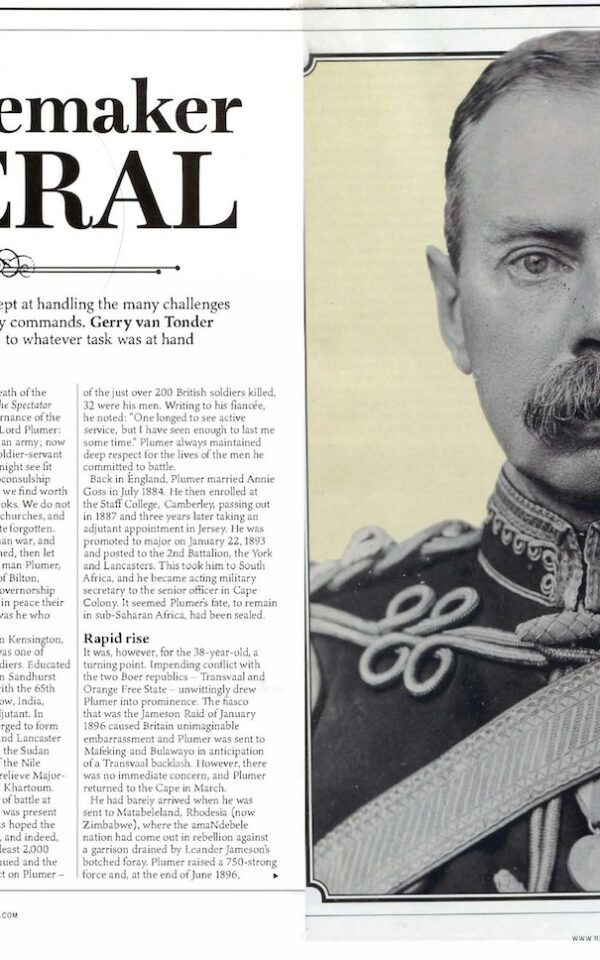In the 1960s, the right-wing minority government of Southern Rhodesia (now Zimbabwe) refused to acquiesce to calls for majority rule, electing instead to unilaterally declare itself independent of Britain on 11 November 1965. Almost immediately, nationalist insurgents started to cross into Rhodesia from Zambia to use military means to force the government into submission.
Rhodesia’s security forces commenced ‘border-control’ operations, successfully eliminating whole gangs of poorly equipped guerrillas or ‘terrorists’, the term used by the Rhodesians. Troop deployments and motorised patrols were conducted using standard, ‘soft- skinned’ vehicles such as the Land Rover, Bedford RL trucks and Ford International F250s. Where the terrain permitted, Ferret scout cars were employed.
Then over Christmas 1972, events in the Centenary commercial farming area north- west of the capital Salisbury (now Harare) would permanently change the manner in which the Rhodesians prosecuted counter-insurgency operations throughout most of rural Rhodesia. Members of the Rhodesian Light Infantry (RLI) and ‘C’ Squadron, Special Air Service (SAS), responded to attacks on two farm homesteads, during which an RLI F250 detonated an anti-tank landmine planted by the guerrillas. One soldier died of his injuries two days later, while another lost both his legs.
The Rhodesian security forces were completely unprepared for this type of warfare. Landmines—predominantly the Soviet-made TM-46—together with RPG-7 anti-tank rocket grenades employed in ambushes, exposed the inadequacy of existing vehicles. In a short space of time, and while isolated through international economic sanctions, local private enterprise and the military addressed the need for a range of vehicles that would afford the occupants protection from both landmines and ambush fire. As the guerrilla war escalated to engulf vast tracts of the Rhodesian countryside, where most roads were untarred, specialist factories rolled out a veritable ‘menagerie’ of locally designed and constructed mine- and ambush-protected (MAP) vehicles: Rhino, Hyena, Leopard, Kudu, Cougar, Crocodile, Puma. Attention was turned to applying mine protection to the existing, standard configuration Land Rover body and chassis. This entailed affixing steel blast-deflector plates behind the front wheel arches as well as deflectors shielding the rear wheels. Industrial conveyor belting was fitted across part of the rear cab window to also absorb blast from a rear-wheel detonation. The cab was further protected by a framework of roll-bars, made up of 32mm steel water piping. This served to protect the occupants should the blast overturn the vehicle. Seatbelts were also fitted and the wearing thereof made compulsory. The key to affording maximum protection for small numbers of vehicle occupants was to provide an armour-plated and roll bar-encased capsule, carried above offset front and rear wheel assemblies. Considerable time and personal resources to the development of such a mine-protected vehicle, with hours spent examining the wrecks of vehicles which had detonated landmines. This resulted in 1974 in the ‘Leopard’, a custom-built, mine-protected monocoque—French for ‘single shell’—unit, which could carry five passengers. It was powered by a relatively inadequate Volkswagen engine and Type-2 VW Kombi gearbox and an external fuel tank set well to the rear.
In 1975, another commercial enterprise came up with their version of a Rhodesian landmine-protected vehicle by designing the ‘Kudu’; originally the ‘Ojay’. The main characteristic of this Land Rover or Nissan 4×4 chassis-mounted vehicle, was the zigzag or concertina bullet deflectors on the sides of the capsule; with a bit of fertile imagination, this also resembled the corkscrew shape of the horns of an African antelope, the kudu.
At this stage of the war, the Kudu became the only mass-produced mine-protected vehicle in Rhodesia. With a passenger capacity of five to eight in addition to the driver, the powerful Nissan motor often led to speed restrictions or governing of the Kudu. Many criticised the Kudu for being both top-heavy, and therefore unstable and awkward to drive, with limited driver vision through the relatively small bullet-proof windscreen. As with the Rhino, there was also a railway variant.
Whilst the mainstay of military heavy vehicles and troop carriers was initially from the Bedford and Mercedes stables, almost all other paramilitary and government departments, including the BSAP, had a fleet of centrally maintained 7-ton Isuzu and Nissan trucks. The chasses of these vehicles became the base for the mine-protected and armour-plated (MAP) ‘Crocodile’ and ‘Puma’ troop carriers.
Using the Rodef-25 Unimog chassis, the Rhodesian security forces had no qualms about copying the design of the West German UR-416 developed by Rheinstahl Maschinenbau. Although not anti-landmine protected, the ‘Pig’ was a heavily armed fighting vehicle, favoured on cross-border raids on guerrilla rear bases. It was fitted with three pivot mounts for Belgian-made, 7.62 mm, FN MAG general-purpose machine guns. It could also be equipped with twin AN/M2 12.7mm anti-aircraft guns or modified Hispano 20mm cannon.
Towards the end of hostilities, the Rhodesians put to use several captured Soviet- made BTR-152 armoured personnel carriers. Constructed on the chassis and transmission of a ZiS-151 utility truck, the vehicle had first entered service with a number of Warsaw Pact member states in 1950, becoming the mainstay of Soviet motorised rifle battalions.






Reviews
There are no reviews yet.